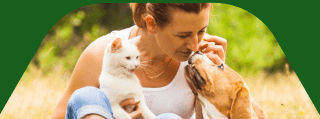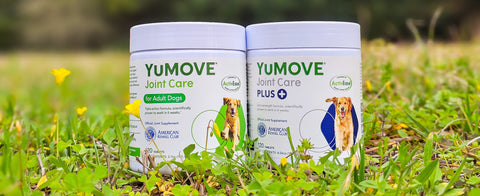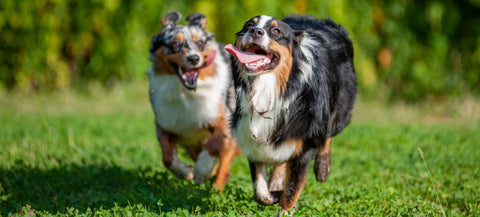
In my last blog we discussed the fundamental skill of recall. If you are still struggling with your dog responding quickly to their name and running to you for praise, you might want to do a little refresher course using healthy treats or by playing a game of tug as a reward. Each time I introduce my dog to a new environment like a dog show or a new park, I keep them on leash and do some quick recalls back for a high value reward. The sport of agility has lots of distractions, similar to the classes you may attend while teaching the sport to your dog. It is a good idea to search out new locations to practice recalls, attention, and play. Keep your dog on leash to practice recalls before you turn them loose at each new location.
Hand Targeting
This is a reasonably easy skill to teach and is so much fun for you and your dog. To start, hide a tiny treat between your closed fingers in an open palm and show your dog what you have. When they touch your palm to get the treat open your fingers and let them have the goodie. Next, hide another treat and repeat this process a few times. Now you’ll need to switch from this initial cookie bribery to a reward when they touch your hand. Hold out your palm and as soon as they show interest in touching your hand drop a cookie into that open hand. Hold out your palm again, and after some subsequent repetitions, wait longer to drop the cookie in your hand. Be a little patient until your dog is reaching out and touching your palm with their nose. If your dog bites at your hand, drop the cookie in your palm quicker so they are not getting frustrated. You could also try a lower value treat if they get too enthusiastic.
Hand targeting can be used to line up your dog at your side or as a trick to keep their attention. Always reward the nose touch in the same hand they touched, or they will learn to “skip to the chase” and just ask for the cookie from your other hand. I like to teach this skill until the dog hits my hand with some intent. You can teach your dog to hold his nose on your palm for longer periods of time, or you can do multiple touches. If you repeat your cue, your dog should repeat the touch.
I usually introduce a cue word for this behavior very soon. If I can get my dog to touch my hand a dozen times, then I am ready to call this behavior by a name. This is called “adding a verbal cue.” “Touch”, “target” or “nose” are words that are commonly used. Make up your own fun word to get your dog to bop your hand. You will give your verbal cue paired with your physical cue of showing your dog your palm once you get this game started.

Stays & Words
There are a lot of words used in agility and it is a good idea to start teaching them early on in training. I like to see that my dog will respond to a word for a position or device without me having to move or bribe my dog to do the behavior.
I do not actually use the word “stay” in the beginning of teaching my dog to stay in a position like sit, down or stand. I just use the specific word of the position and then reward my dog for staying without moving from that position. Of course, you do need to teach your dog each position well before you can expect your dog to stay in one. Sit is usually the easiest position to use as a stay, but I also teach down and stand and at the end of a position/stay I use my “break” word. Review the last blog for tips on the release cue of “break”.
Each position like sit is taught separately, and my dog gets a reward for each single behavior. The command of “sit” is rewarded as is the “break” cue. If I have successfully also taught my dog “down”, then I might do “sit”, reward, “down”, reward then “break.” One you have a command for “stand” and a couple other tricks, intersperse them with other commands to keep your dog working and listening. In the beginning reward each separate behavior, then try two positions before the reward, then 3 or 4. Random rewards are the best and if there is one position your dog struggles with do not put that in the position change rotation.
Look at this video of Mockingjay, my Border Collie/Jack Russell cross practicing her position changes of sit-down-stand-break, and then I ask for her first a “chin” cue which means put your chin on the ground and hold it there, turn away or “switch cue” and finally her cute little bow I call “curtsy”.
Device training
I introduce different pieces of non-agility equipment early in my dogs training. They are usually small and low devices my pup can get up on or place their feet on. In the beginning I just want my dog to engage with something I am standing or sitting close to, and I reward them for making some contact with that object. Eventually my dog will have different behaviors associated with each device but sometimes the device has a name too.
Here are the cues Mockingjay demonstrates in the little device training video.
Feet - put her front feet on something
Spot - Put her rear feet on something
Quick - wrap a stool counter clockwise
D-D-D - wrap a stool clockwise.
Next time on What’s your next Move?
Retrieves, more training words, line up cues and lots of tugging throughout each practice session.
Get to know Nancy Gyes
Nancy’s dog training career began over 30 years ago, teaching obedience classes for puppies and adult dogs. She has earned many titles with her dogs and won multiple National Agility Championships, in addition to attending the European Open and World Championships. She is currently the coach of the American Kennel Club’s USA Agility World Team while also running her own agility training business in San Jose, California with her husband. It has been her honor to be named an American Ambassador for YuMOVE, a product she heartily endorses and gives to her own dogs!

Are you interested in canine athletics? Share your training and competition photos with us on our Instagram and Facebook pages! Don't forget to follow and tag us.










